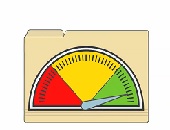Grown-ups in strategic positions
How does an investor approach the problems of hiring and firing the investment manager firm (I.M.)? “In general, the first thing is to understand who you are as a business,” advises Sidney Hardee, Managing Partner of Hardee Brothers, LLC. “You must understand this thoroughly before engaging an investment manager.” He was the sole presenter of the one-hour webinar “Hiring and Firing Investment Managers” sponsored by the Chartered Financial Analysts Institute on January 15, 2020. Characteristics of the I.M. What are the characteristics of a good investment manager firm? Organizational stability is key, Hardee said. “What is the structure of this organization, […]
Top 5 Trends in Risk Management
The champagne has been drunk, and the New Year has been rung in. What trends are predicted in risk management as we welcome the new decade? “In 2020, we’ll likely see significant changes in risk models, processes and functions,” predicts Brenda Boultwood, Risk Advisory Partner at Deloitte. As a senior expert in risk culture and corporate governance, she published an article online January 10, 2020, for the Global Association of Risk Professionals (GARP). We present the highlights and a link to the full article below. The three lines of defense business model, as we know it, will end This is actually […]
From brown energy to green
How will climate change affect the financial sector and the broader economy? What policy responses will mitigate climate change risks? Recently, the US Federal Reserve Bank (FRB) sponsored the first conference dedicated to exploring the economic and financial risks associated with climate change. “Climate change will have sweeping effects on our economy and financial system,” says the report summarizing the main themes of the conference. The report, released on December 16, 2019, was co-authored by Galina B. Hale, Òscar Jordà, and Glenn D. Rudebusch. Hale is a research advisor and Jordà and Rudebusch are both senior policy advisors at the Federal […]
Machine learning sniffs out corruption
“Bribery and corruption are by-products of risk culture,” said Aparna Gupta, Associate Professor at Lally School of Management at Rensselaer Polytechnic Institute. “We can take a step back and devise methods to detect it using textual data and machine learning.” Gupta was the second of two speakers at the one-hour webinar “Corruption and Corporate Governance” sponsored by the Global Association of Risk Professionals (GARP) on October 30, 2019. Since culture is intangible, empirical work on the relation between risk culture and risk management is limited. Traditional approaches for assessing risk culture have many drawbacks such as bias and lack of comparability. Nonetheless, […]
Earthquakes kill, and so does bribery
“Bribery and corruption are not victimless crimes,” said Hilary Rosenberg, Managing Director and Global Head of Anti-Bribery & Corruption at Standard Chartered Bank. To drive home the point, she showed a brief video in which the pile of rubble from an earthquake is compared to a house collapsing because corruption allowed an unsafe building to be approved. Furthermore, corruption “can hinder economic progress and destroy people’s trust in their government,” Rosenberg said. She was the first of two speakers at the one-hour webinar “Corruption and Corporate Governance” sponsored by the Global Association of Risk Professionals (GARP) on October 30, 2019. Anti-corruption policy […]
Finding a New Balance
How can monetary policy achieve price stability and full employment objectives in the midst of a changing economic environment? Lately, the US Federal Reserve Bank (FRB) has been thinking hard about new ways to control inflation, given the new economic headwinds. “Persistently low inflation presents a new problem for monetary policymakers,” said Mary C. Daly, president and CEO of the Federal Reserve Bank of San Francisco (FRBSF). On August 29, 2019, she gave a speech to a conference of economists and policymakers in Wellington, NZ. This was a significant venue, because inflation targeting was pioneered in New Zealand in 1990, […]
Shadow Banking in China
Shadow banking has enjoyed extraordinary growth over the past decade, especially in the emerging markets of China. The implications were discussed in the webinar “Shadow Banking: Standing at the Precipice?” sponsored by the Global Association of Risk Professionals (GARP) on August 6, 2019. Cindy Li, a Greater China analyst of the Federal Reserve Bank of San Francisco, was the second of two speakers at the one-hour GARP webinar. She said the shadow banking system in China has evolved to a fairly large group of powerful competitors, but that has led to “a build-up of risk” as China’s economic growth slows down. First, […]
Standing at the Precipice?
What is shadow banking, and are the associated risks being properly mitigated? A summary of issues can be found in the webinar “Shadow Banking: Standing at the Precipice?” sponsored by the Global Association of Risk Professionals (GARP) on August 6, 2019. Fabio Natalucci, Deputy Director, Monetary and Capital Markets Department of the International Monetary Fund (IMF), was the first of two speakers at the one-hour webinar. He began by explaining that the shadow banking system prefers to be thought of in “less sinister” terms as “non-bank financial intermediaries” that provide services similar to, but outside of, the regular banking system. He described […]
A Good Start…
Financial risks due to climate change are receiving more attention of late, particularly for investors and regulators, but how far along are firms in addressing the issues? A report on climate risk management at financial firms tabled on June 28, 2019, sponsored by the Global Association of Risk Professionals (GARP), answers the question with its subtitle: “A Good Start, But More Work to Do.” The report is co-authored by Jo Paisley, Co-President, and Maxine Nelson, Senior Vice President at GARP. “Our sample covered 20 banks and seven other financial institutions … from across the globe. These firms have a global […]
More Leaves than Grapes?
Who says the market on old books is in a downward spiral? Luca Pacioli wrote the definitive treatise Summa de Arithmetica, Geometrisa, Proportioni et Proportionalita and published it in Venice in 1494. On June 12, 2019, Christie’s put up one copy for auction. (The starting price was one million USD; it eventually sold for 1.2 million USD.) Experts estimate 120 copies of this book still exist. An image of a typical page, reproduced here, shows its type font is somewhat less readable than the modern accounting textbook. Summa de Arithmetica was widely read and used at the time. It contains real-life examples, […]










